Содержание
- 2. The Spinal Cord Foramen magnum to L1 or L2 Runs through the vertebral canal of the
- 3. Fetal 3rd month: ends at coccyx Birth: ends at L3 Adult position at approx L1-2 during
- 4. Spinal nerves Part of the peripheral nervous system 31 pairs attach through dorsal and ventral nerve
- 5. Spinal nerves continued Divided based on vertebral locations 8 cervical 12 thoracic 5 lumbar 5 sacral
- 6. Spinal nerves continued Note: cervical spinal nerves exit from above the respective vertebra Spinal nerve root
- 7. Protection: Bone Meninges CSF (cerebrospinal fluid) 3 meninges: dura mater (outer) arachnoid mater (middle) pia mater
- 8. Dura mater Arachnoid mater Pia mater Spinal cord coverings and spaces http://www.eorthopod.com/images/ContentImages/pm/pm_general_esi/pmp_general_esi_epidural_space.jpg
- 9. LP (lumbar puncure) = spinal tap (needle introduced into subdural space to collect CSF) Lumbar spine
- 10. Spinal cord anatomy Posterior median sulcus (“p”) Anterior median fissure (“a”) White matter (yellow here) Gray
- 11. Gray/White in spinal cord Hollow central cavity (“central canal”) Gray matter surrounds cavity White matter surrounds
- 12. Spinal cord anatomy Gray commissure with central canal Columns of gray running the length of the
- 13. White matter of the spinal cord (myelinated and unmyelinated axons) Ascending fibers: sensory information from sensory
- 14. The Brain: embryonic development Develops from neural tube Brain subdivides into Forebrain Midbrain Hindbrain These further
- 15. Brain development Learn forebrain, midbrain and hindbrain in (b) See next color coded pics in reference
- 16. Space restrictions force cerebral hemispheres to grow posteriorly over rest of brain, enveloping it Cerebral hemispheres
- 17. Anatomical classification Cerebral hemispheres Diencephalon Thalamus Hypothalamus Brain stem Midbrain Pons Medulla Cerebellum Spinal cord
- 18. Parts of Brain Cerebrum Diencephalon Brainstem Cerebellum
- 19. Usual pattern of gray/white in CNS White exterior to gray Gray surrounds hollow central cavity Two
- 20. Gray and White Matter Like spinal cord but with another layer of gray outside the white
- 21. Ventricles Central cavities expanded Filled with CSF (cerebrospinal fluid) Lined by ependymal cells (these cells lining
- 22. Lateral ventricles Paired, horseshoe shape In cerebral hemispheres Anterior are close, separated only by thin Septum
- 23. Third ventricle In diencephalon Connections Interventricular foramen Cerebral aqueduct
- 24. Fourth ventricle In the brainstem Dorsal to pons and top of medulla Holes connect it with
- 25. Subarachnoid space Aqua blue in this pic Under thick coverings of brain Filled with CSF also
- 26. Surface anatomy Gyri (plural of gyrus) Elevated ridges Entire surface Grooves separate gyri A sulcus is
- 27. Gyri (plural of gyrus) Elevated ridges Entire surface Grooves separate gyri A sulcus is a shallow
- 28. Parts of Brain Cerebrum Diencephalon Brainstem Cerebellum
- 29. simplified… Back of brain: perception Top of brain: movement Front of brain: thinking
- 30. Cerebral hemispheres Lobes: under bones of same name Frontal Parietal Temporal Occipital Plus: Insula (buried deep
- 31. Cerebral hemispheres: note lobes Divided by longitudinal fissure into right & left sides Central sulcus divides
- 32. Lateral sulcus separates temporal lobe from parietal lobe Parieto-occipital sulcus divides occipital and parietal lobes (not
- 33. coronal section Note: longitudinal fissure, lateral sulcus, insula Note: cerebral cortex (external sheet of gray), cerebral
- 34. Cerebral cortex Executive functioning capability Gray matter: of neuron cell bodies, dendrites, short unmyelinated axons 100
- 35. Prenatal life: genes are responsible for creating the architecture of the brain Cortex is the last
- 36. Cerebral cortex All the neurons are interneurons By definition confined to the CNS They have to
- 37. Sensory areas Posterior to central sulcus Primary somatosensory cortex: postcentral gyrus of parietal lobe (allows conscious
- 38. From special sense organs Sight: occipital lobe Primary visual cortex (17) Handles info from contralateral retina
- 39. Refer back to this labeled version as needed
- 40. Smell (olfactory sense): uncus Deep in temporal lobe along medial surface
- 41. fMRI: functional magnetic resonance imaging Cerebral cortex of person speaking & hearing Activity (blood flow) in
- 42. Motor areas Anterior to central sulcus Primary motor area Precentral gyrus of frontal lobe (4) Conscious
- 43. Primary motor area continued Precentral gyrus of frontal lobe Precise, conscious or voluntary movement of skeletal
- 44. Motor areas – continued Broca’s area (44): specialized motor speech area Base of precentral gyrus just
- 45. Motor areas – continued Premotor cortex (6): complex movements asociated with highly processed sensory info; also
- 46. Homunculus – “little man” Body map: human body spatially represented Where on cortex; upside down
- 47. Association Areas Remember… Three kinds of functional areas (cerebrum) Motor areas: movement Sensory areas: perception Association
- 48. Association Areas Tie together different kinds of sensory input Associate new input with memories Is to
- 49. Prefrontal cortex: cognition Executive functioning e.g. multiple step problem solving requiring temporary storage of info (working
- 50. Wernicke’s area Junction of parietal and temporal lobes One hemisphere only, usually left (Outlined by dashes)
- 51. Cerebral white matter Extensive communication Areas of cortex with each other Areas of cortex with brain
- 52. Commissures: interconnect right and left hemispheres so can act as a whole Corpus callosum is largest
- 53. Projection fibers: run vertically Cerebral cortex running down (with motor instructions) Or ascend to cerebral cortex
- 54. Corona radiata: spray of projection fibers From precentral (motor) gyrus Combines with sensory fibers traveling to
- 55. Projection fibers Corona radiata: fanning out of the fibers Internal capsule: bundled, pass down Commisure Corpus
- 56. Cerebral hemisphere gray Cortex – already reviewed Basal forebrain nuclei: near hypothalamus - related to arousal,
- 57. Basal ganglia Subcortical motor nuclei Part of “extrapyramidal system” Cooperate with cerebral cortex in controlling movements
- 58. Internal capsule passes between diencephalon and basal ganglia to give them a striped appearance Caudate and
- 59. Basal ganglia Cooperate with cerebral cortex in controlling movements Communicate with cerebral cortex, receive input from
- 60. Basal ganglia Note relationship of basal ganglia to thalamus and ventricles Transverse section again
- 61. Diencephalon (part of forebrain) Contains dozens of nuclei of gray matter Thalamus Hypothalamus Epithalamus (mainly pineal)
- 62. Thalamus (egg shaped; means inner room) Two large lobes of gray matter (over a dozen nuclei)
- 63. Hypothalamus Forms inferolateral walls of 3rd ventricle Many named nuclei Coronal section
- 64. Diencephalon – surface anatomy Hypothalamus is between optic chiasma to and including mamillary bodies Olfactory bulbs
- 65. Diencephalon – surface anatomy Hypothalamus is between optic chiasma to and including mamillary bodies (from Ch
- 66. Cranial Nerve names Identify as many as you can when looking at model and sheep brain
- 67. Hypothalamus “Below thalamus” Main visceral control center Autonomic nervous system (peripheral motor neurons controlling smooth and
- 68. Hypothalamus (one example of its functioning) Control of endocrine system through pituitary gland
- 69. Epithalamus Third and most dorsal part of diencephalon Part of roof of 3rd ventricle Pineal gland
- 70. Brain Stem Midbrain Pons Medulla oblongata Rigidly programmed automatic behavior necessary for survival Passageway for fiber
- 71. Brain stem Midbrain Pons Medulla oblongata
- 72. __Cerebral peduncles____ Contain pyramidal motor tracts Corpora quadrigemina: XVisual reflexes XAuditory reflexes Midbrain ______Substantia nigra (degeneration
- 73. __Middle cerebellar peduncles_ Pons 3 cerebellar peduncles__ Also contains several CN and other nuclei (one to
- 74. Medulla oblongata Relays sensory info to cerebral cortex and cerebellum Contains many CN and other nuclei
- 75. With all the labels….
- 76. Brain Stem in mid-sagittal plane Note cerebral aqueduct and fourth ventricle* * *
- 77. Cerebellum Two major hemispheres: three lobes each Anterior Posterior Floculonodular Vermis: midline lobe connecting hemispheres Outer
- 78. Functions of cerebellum Smooths, coordinates & fine tunes bodily movements Helps maintain body posture Helps maintain
- 79. Functional brain systems (as opposed to anatomical ones) Networks of distant neurons that function together Limbic
- 80. Limbic system (not a discrete structure - includes many brain areas) Most important parts: Hipocampus Amygdala
- 81. Limbic system continued Called the “emotional” brain Is essential for flexible, stable, adaptive functioning Links different
- 82. Reticular formation Runs through central core of medulla, pons and midbrain Reticular activating system (RAS): keeps
- 83. Brain protection 1.Meninges 2. Cerebrospinal fluid 3. Blood brain barrier
- 84. Meninges Dura mater: 2 layers of fibrous connective tissue, fused except for dural sinuses Periosteal layer
- 85. Dura mater - dural partitions Subdivide cranial cavity & limit movement of brain Falx cerebri In
- 86. Arachnoid mater Between dura and arachnoid: subdural space Dura and arachnoid cover brain loosely Deep to
- 87. Cerebrospinal Fluid CSF Made in choroid plexuses (roofs of ventricles) Filtration of plasma from capillaries through
- 88. CSF circulation: through ventricles, median and lateral apertures, subarachnoid space, arachnoid villi, and into the blood
- 89. Hydrocephalus
- 90. Blood-Brain Barrier Tight junctions between endothelial cells of brain capillaries, instead of the usual permeability Highly
- 91. White matter of the spinal cord Ascending pathways: sensory information by multi-neuron chains from body up
- 92. Major fiber tracts in white matter of spinal cord Damage: to motor areas – paralysis to
- 93. Major ascending pathways for the somatic senses Spinocerebellar: proprioception from skeletal muscles to cerebellum of same
- 94. Some Descending Pathways Pyramidal tracts: Lateral corticospinal – cross in pyramids of medulla; voluntary motor to
- 95. Check out: Medical gross anatomy atlas images (good teaching pics): http://anatomy.med.umich.edu/atlas/atlas_index.html (can access from Paul Wissman’s
- 96. Hints & additional pics Unless your prints of the slides are very large and clear, look
- 97. Know the names of the ventricles and which ones connect to which, in order You don’t
- 98. From this site, which also has text explanations: http://www.emc.maricopa.edu/faculty/farabee/BIOBK/BioBookNERV.html
- 99. Brain, sagittal sec, medial view Cerebral hemisphere Corpus callosum Thalamus Midbrain Pons Cerebellum Medulla oblongata
- 100. Internal capsule Anterior limb of internal capsule Genu of internal capsule Posterior limb of internal capsule
- 101. Pons & cerebellum, sagittal section, medial view Midbrain Cerebellum Pons Medulla oblongata Inferior colliculus Superior medullary
- 103. Скачать презентацию
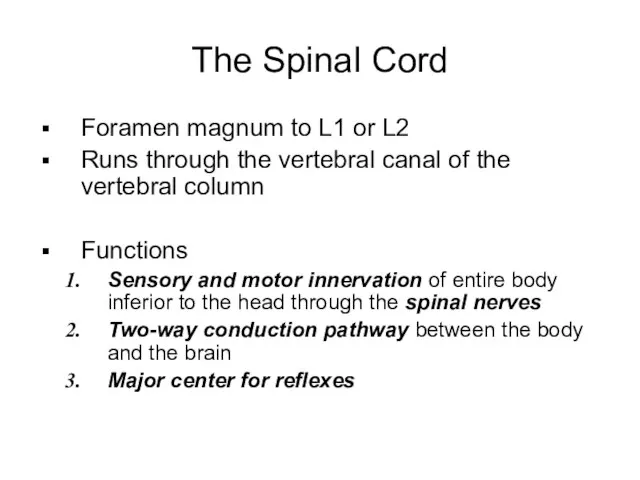
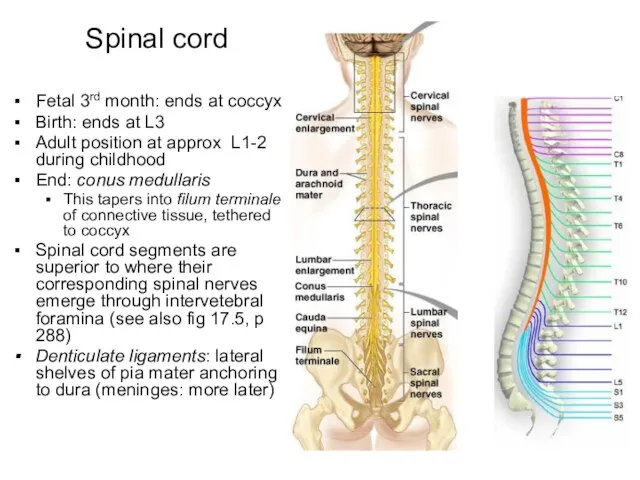

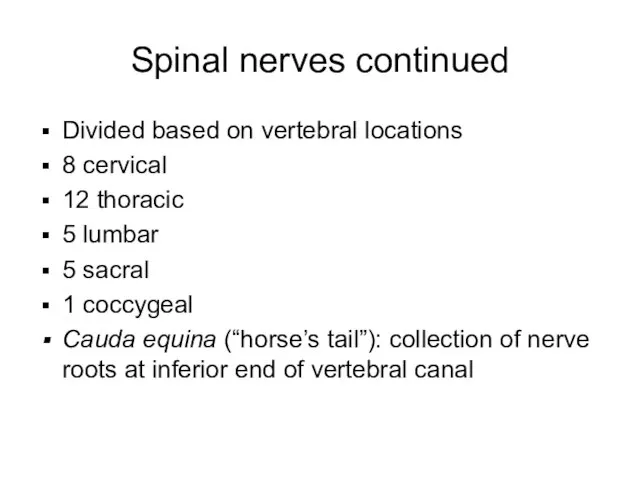
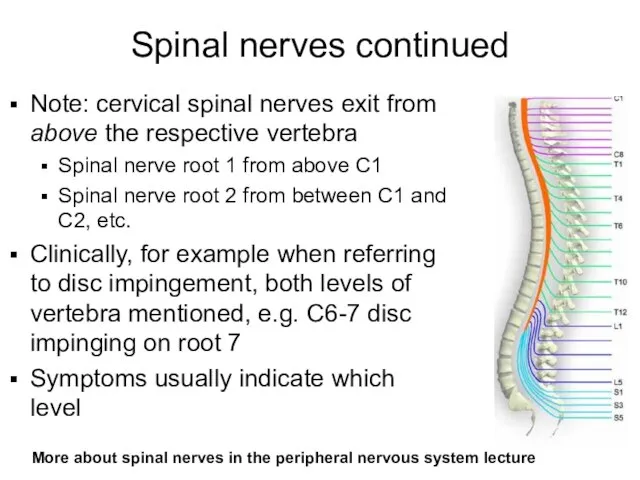
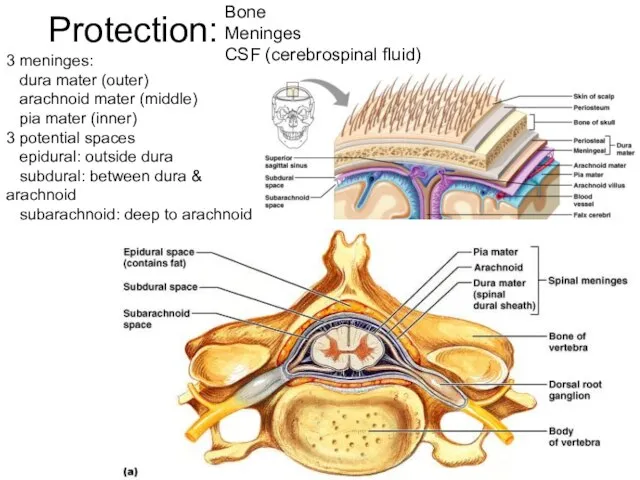
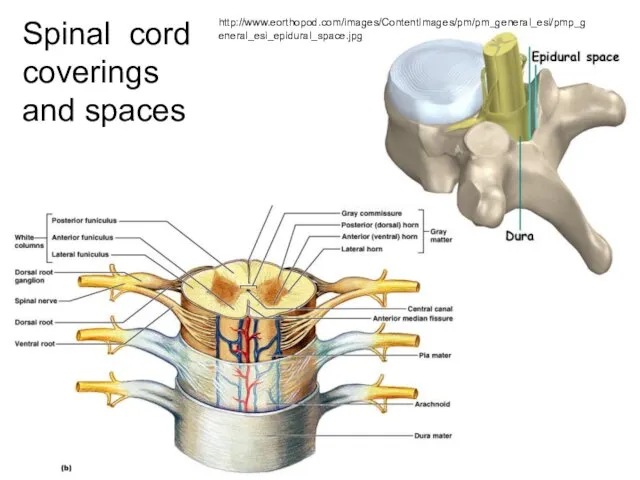



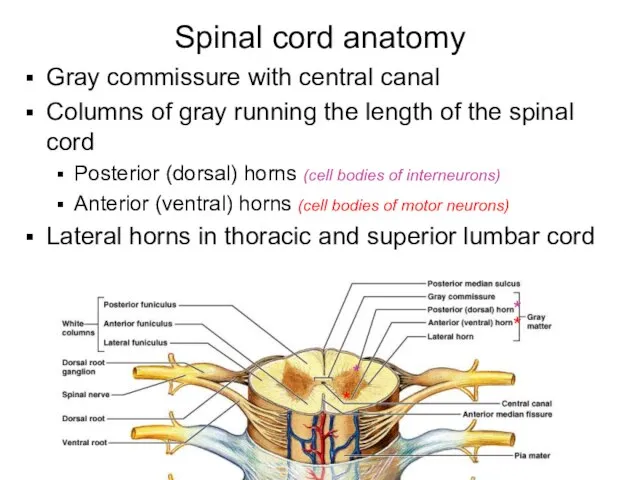
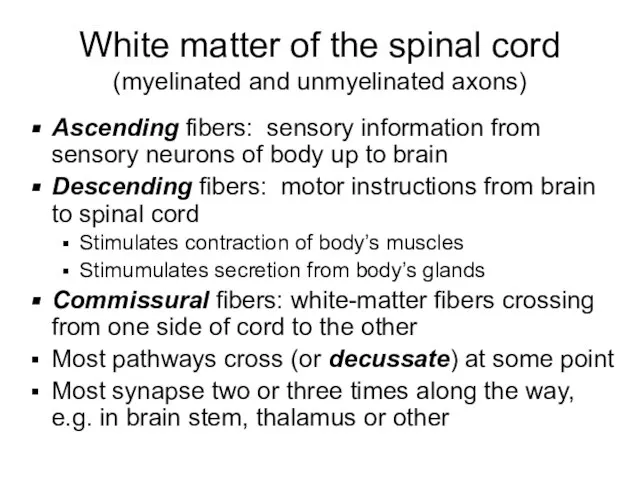

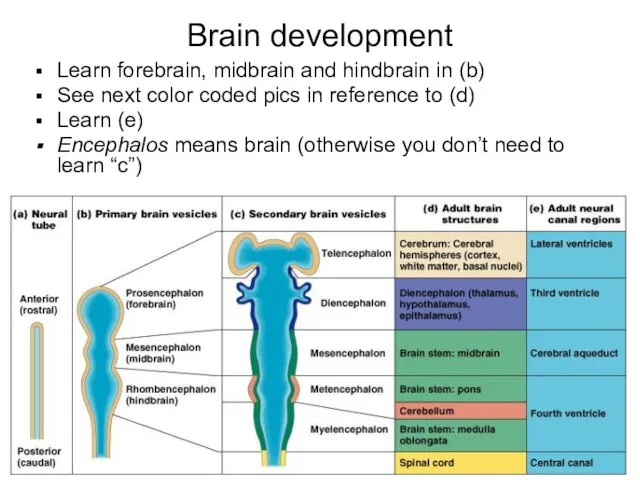
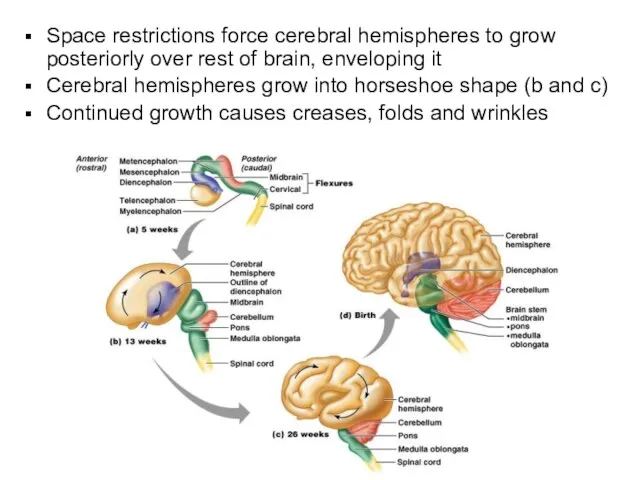
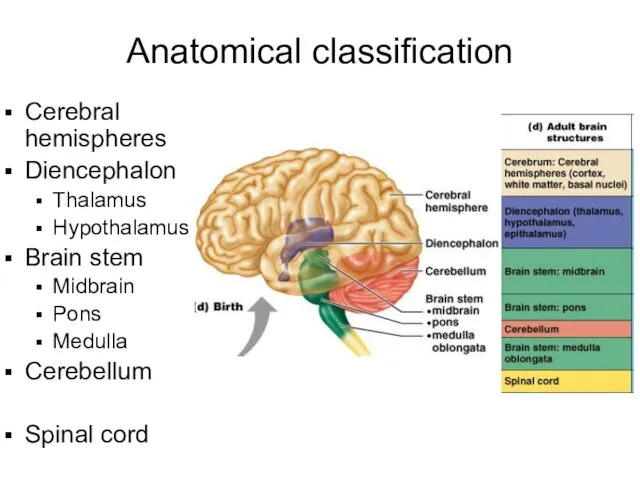



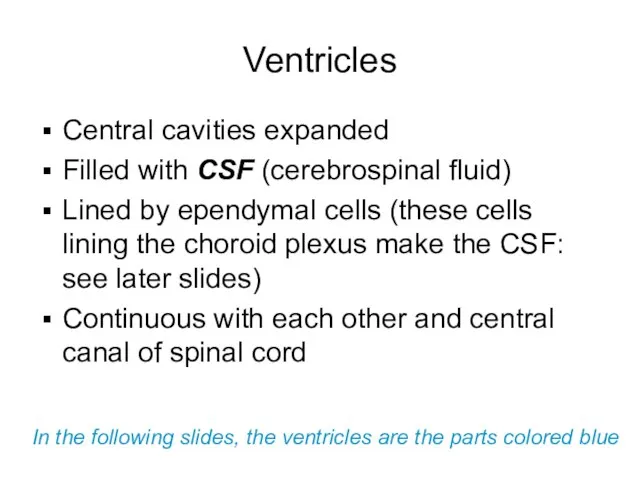

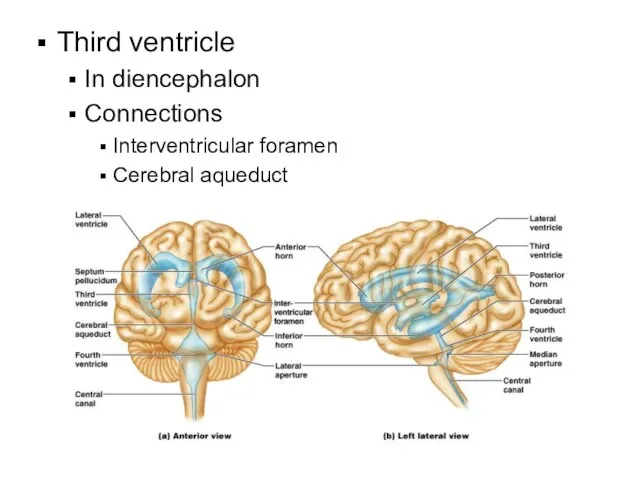
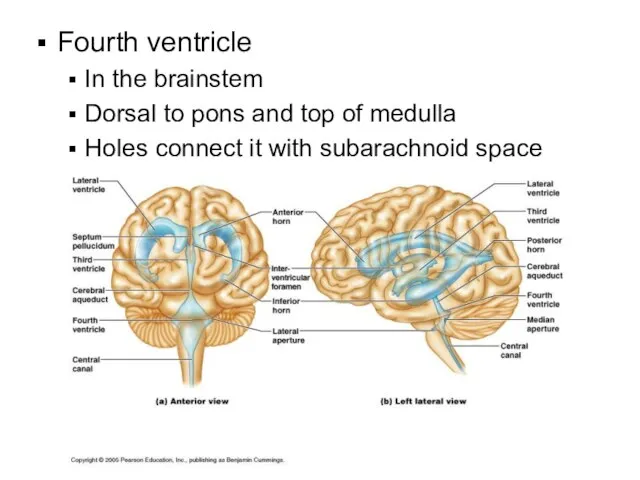

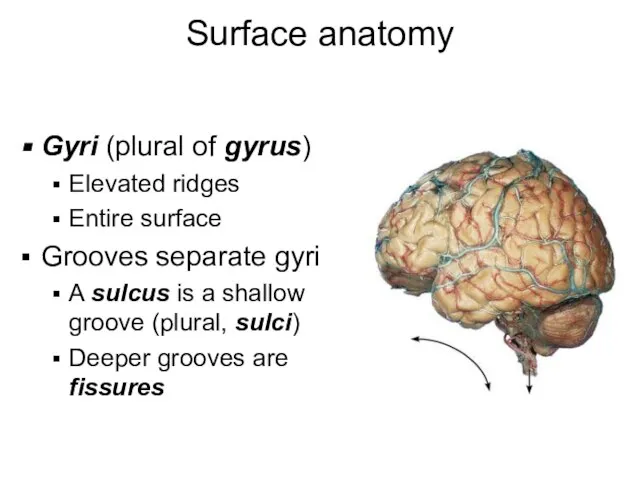
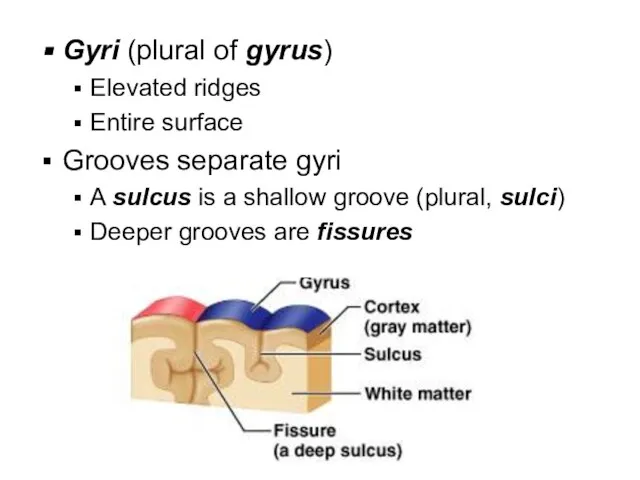
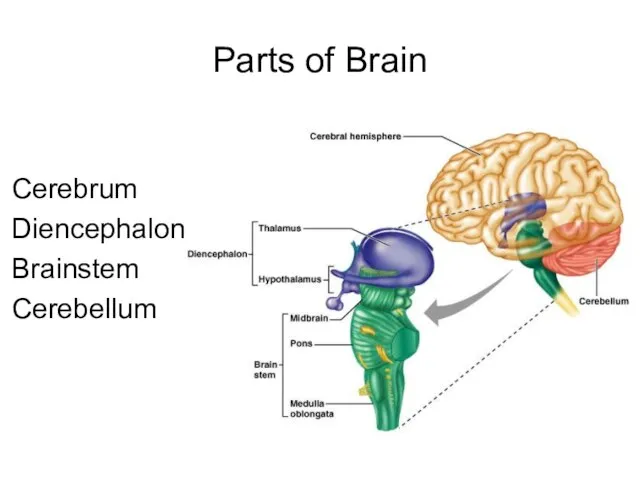
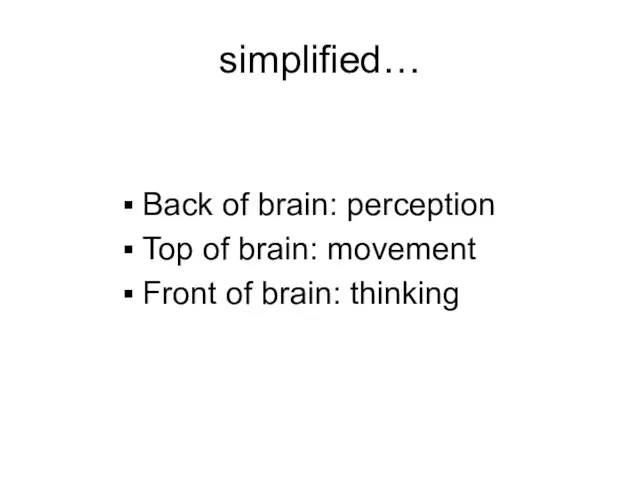
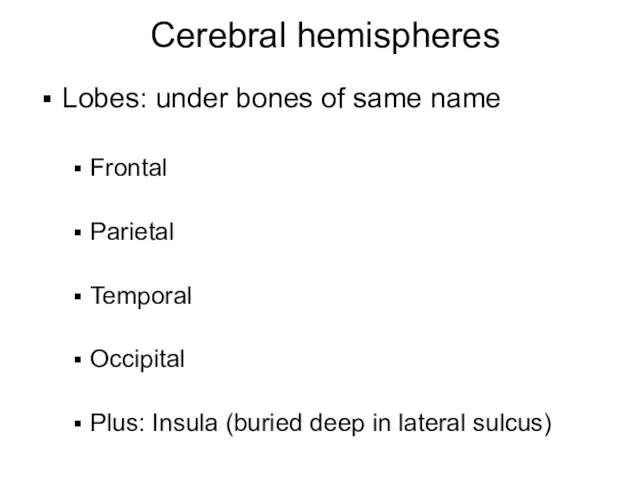
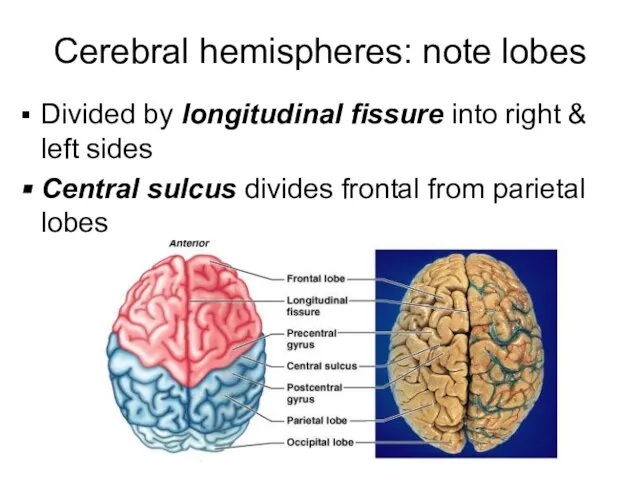
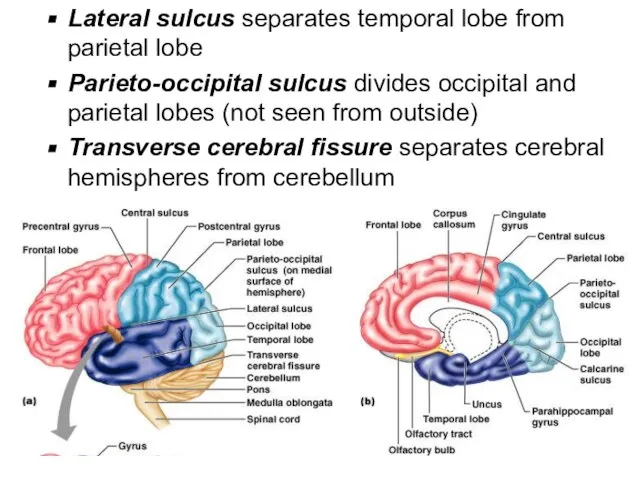

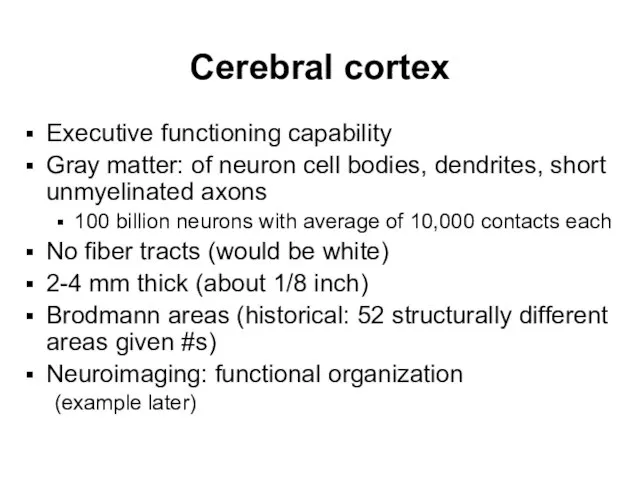

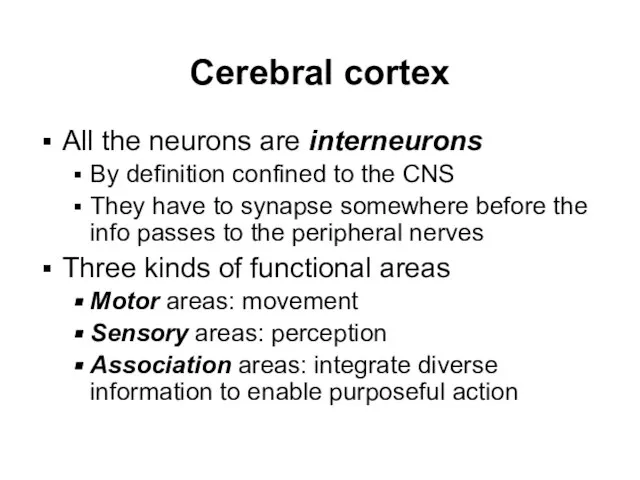

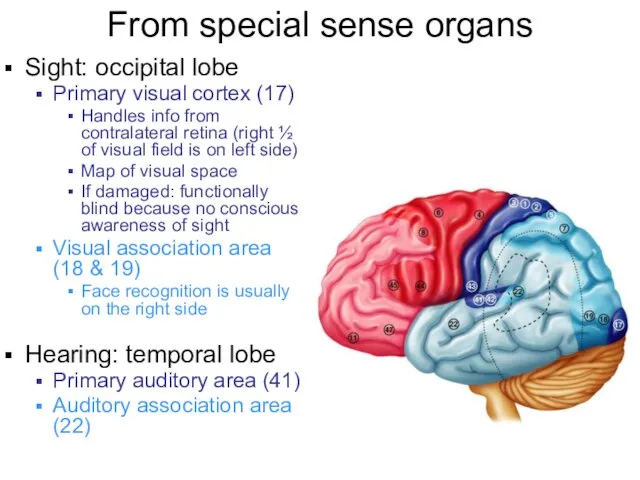

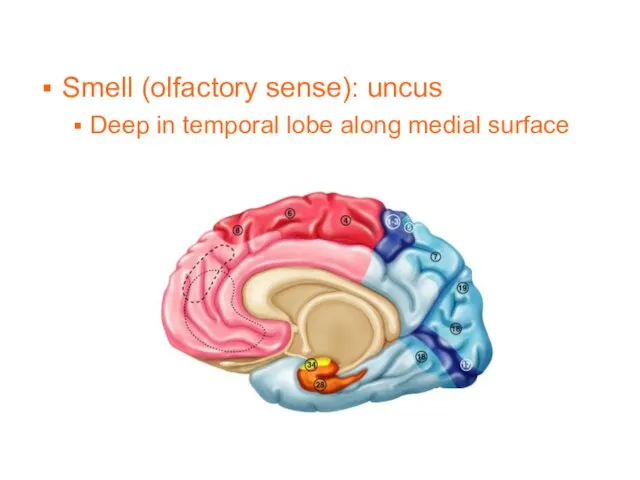


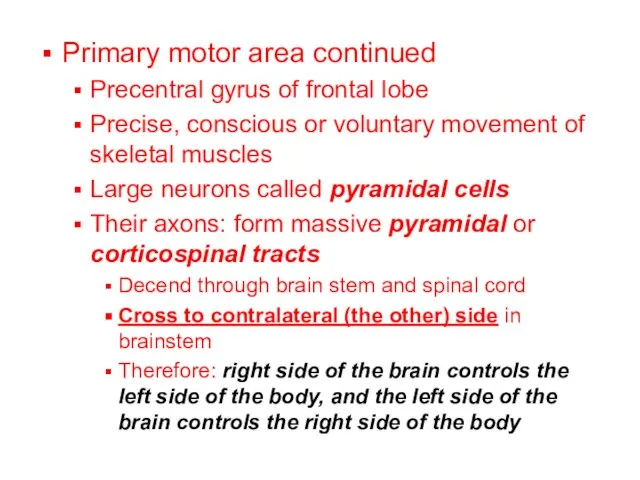
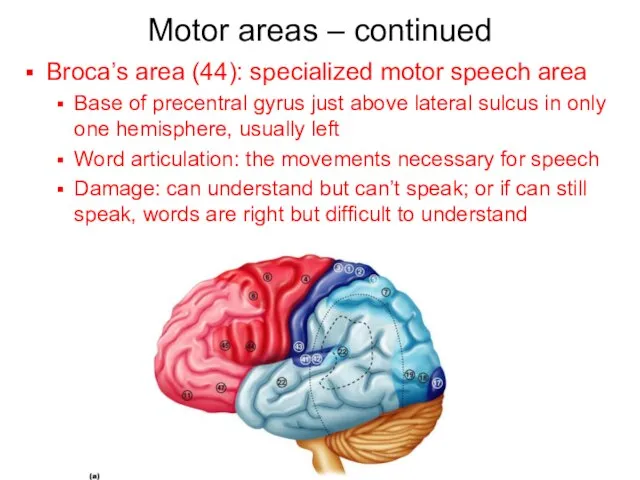
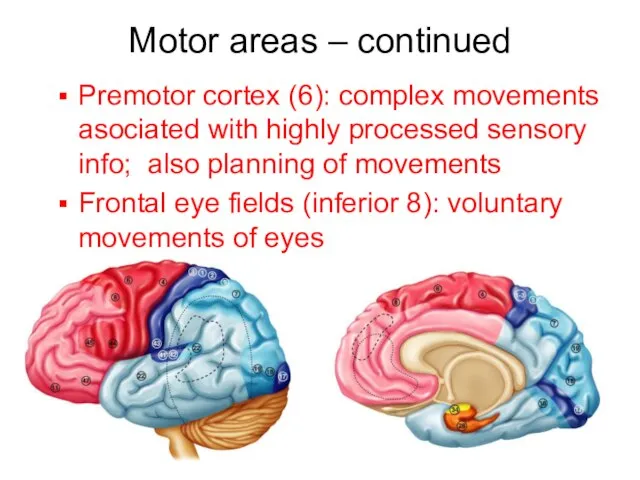
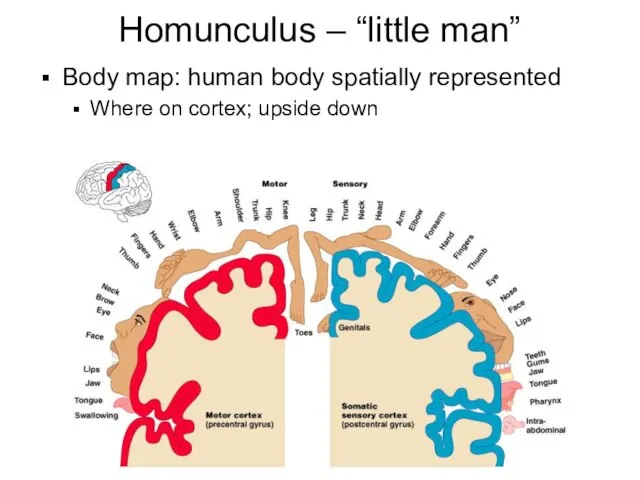
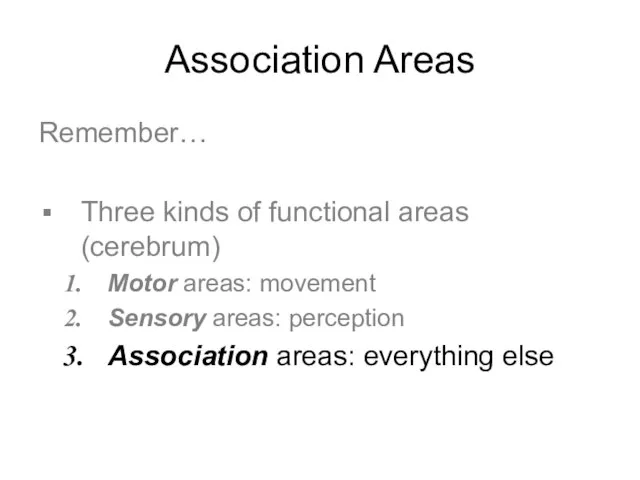
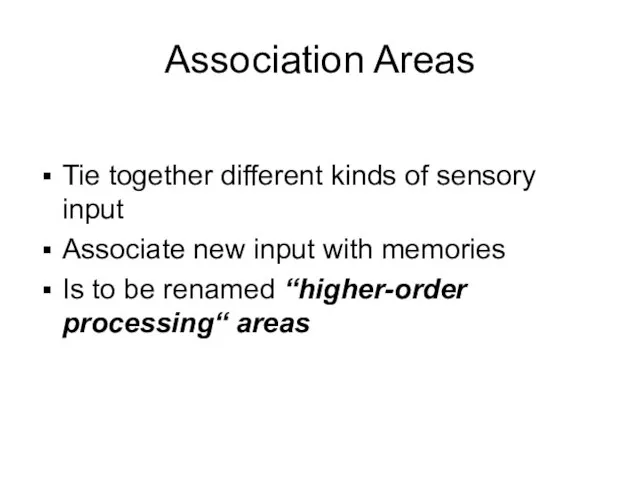




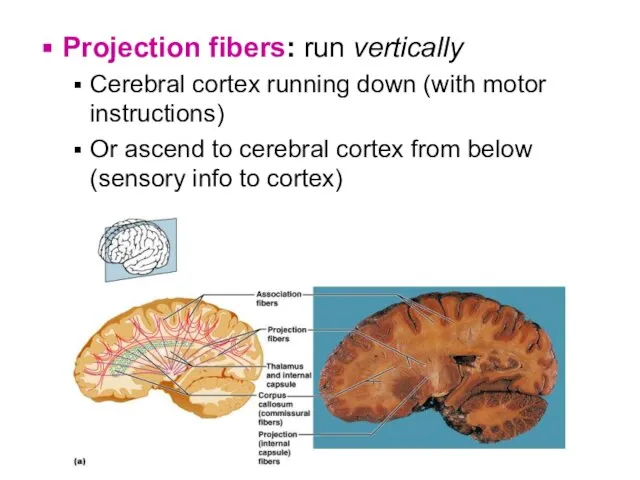
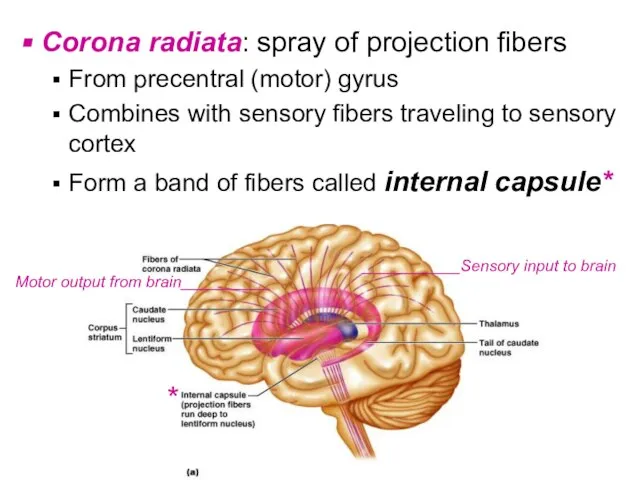


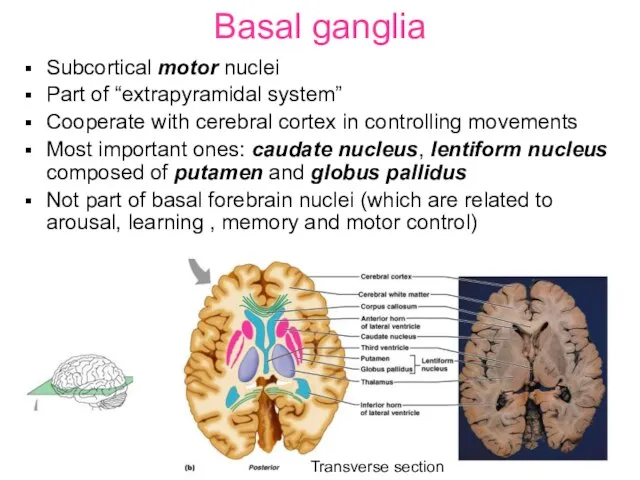
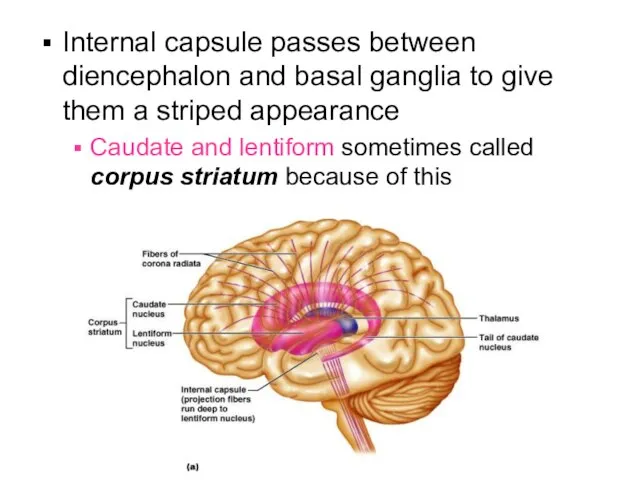

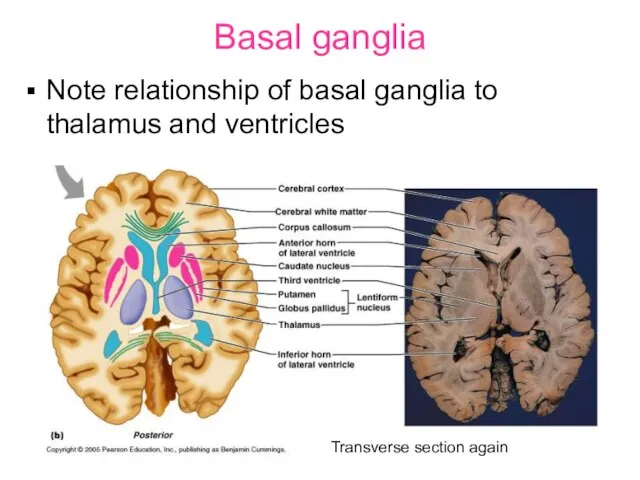
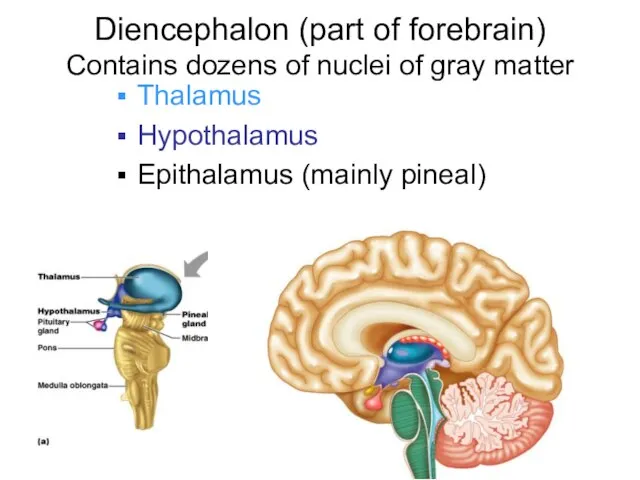
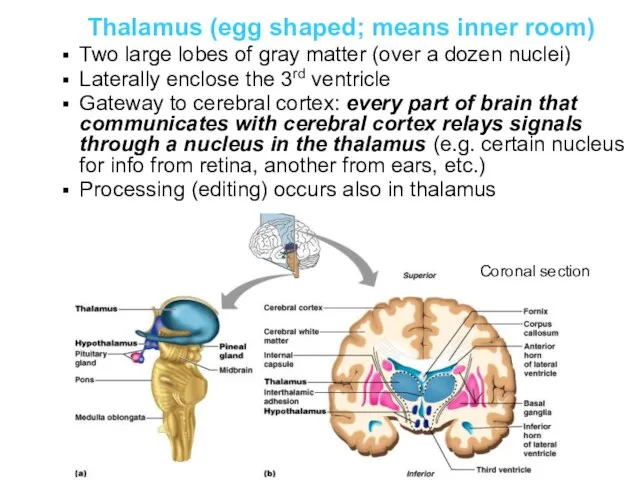

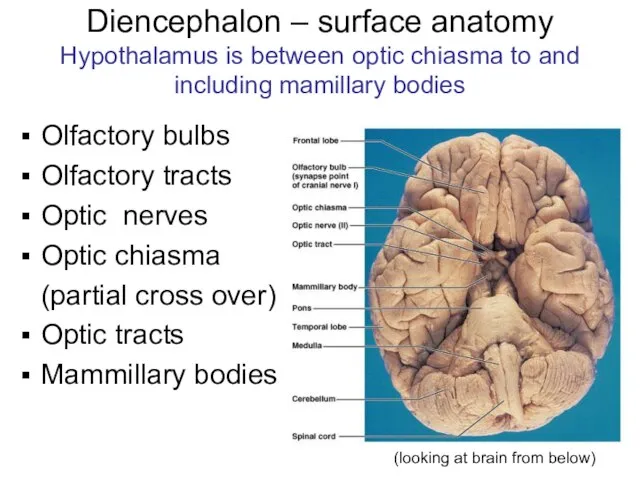
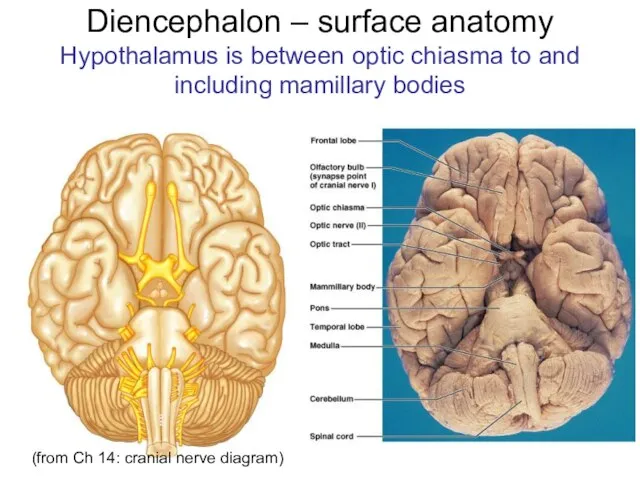

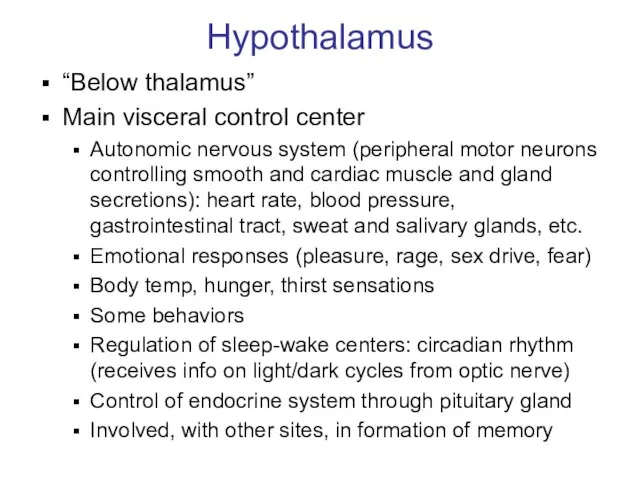

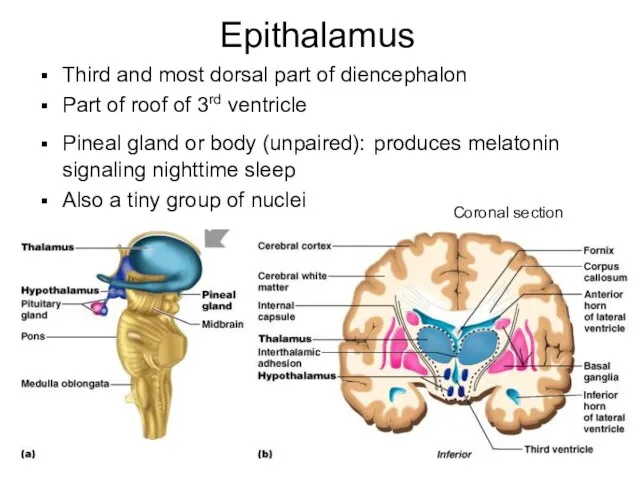
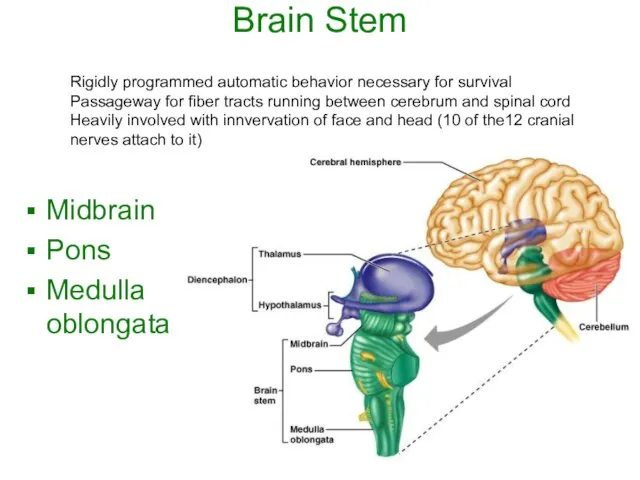
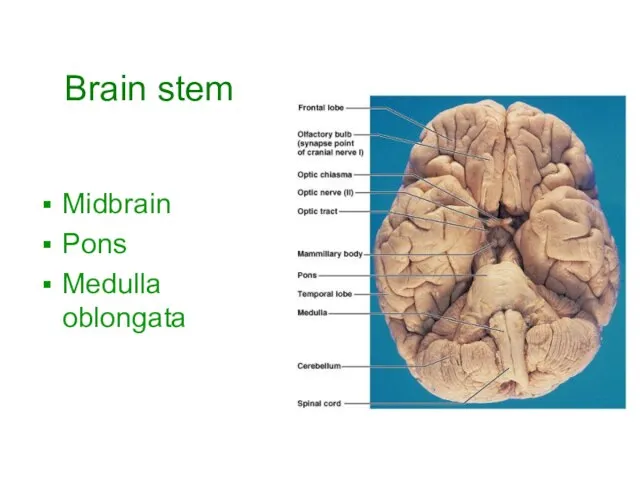
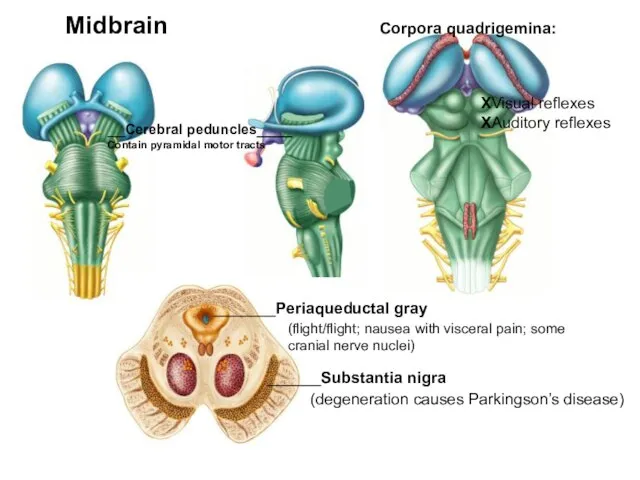
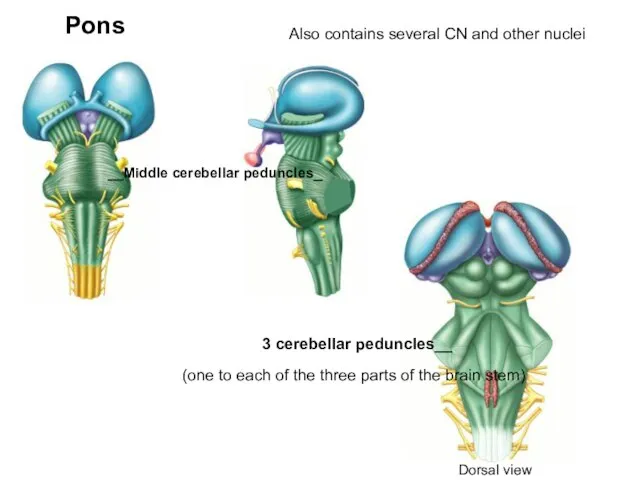
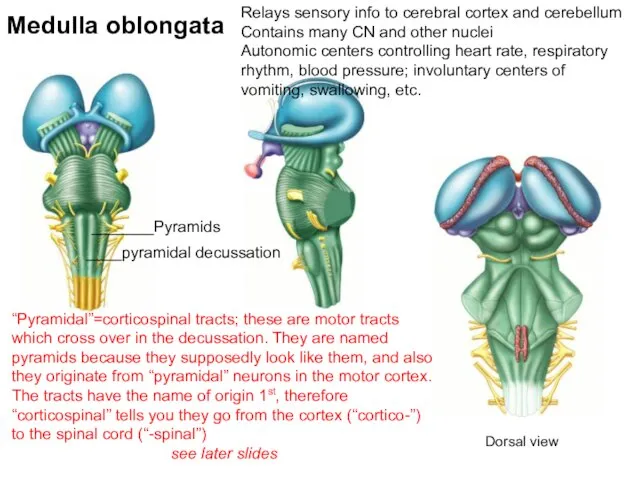
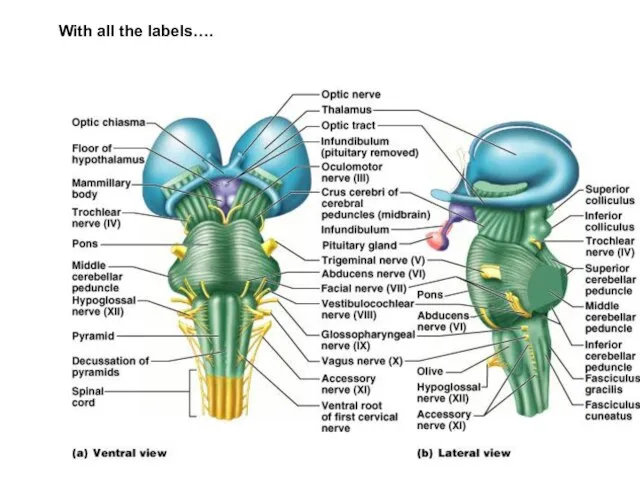

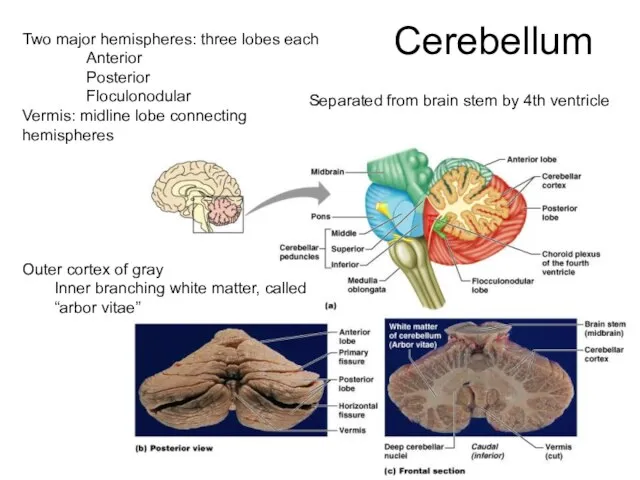


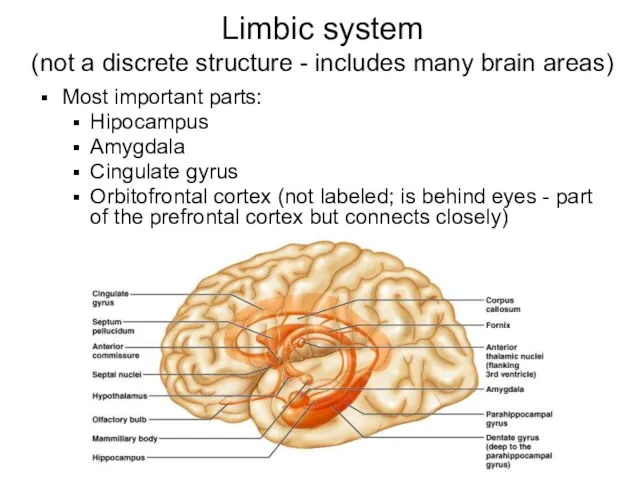
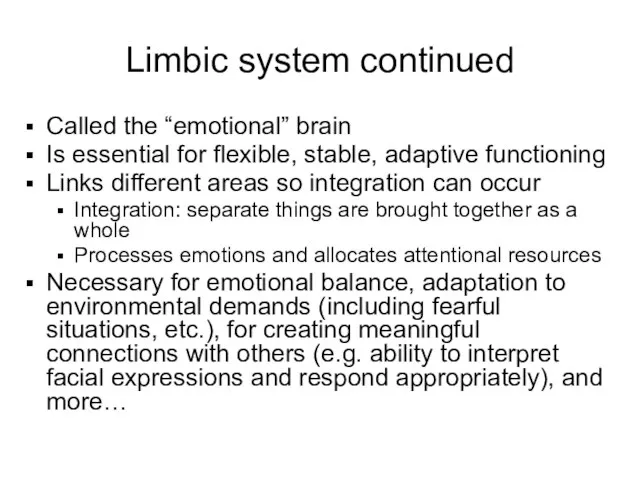

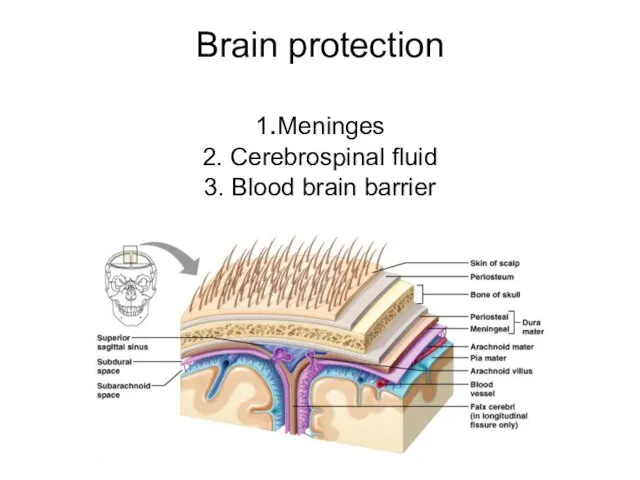
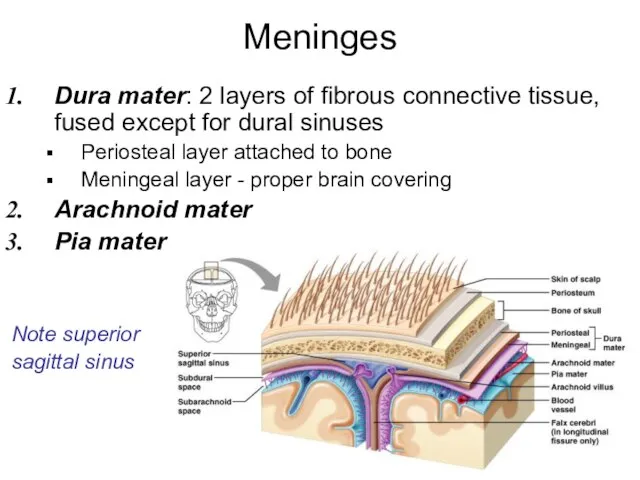

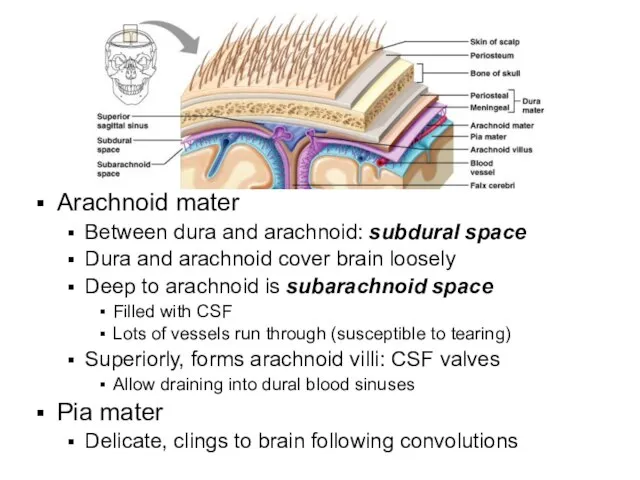
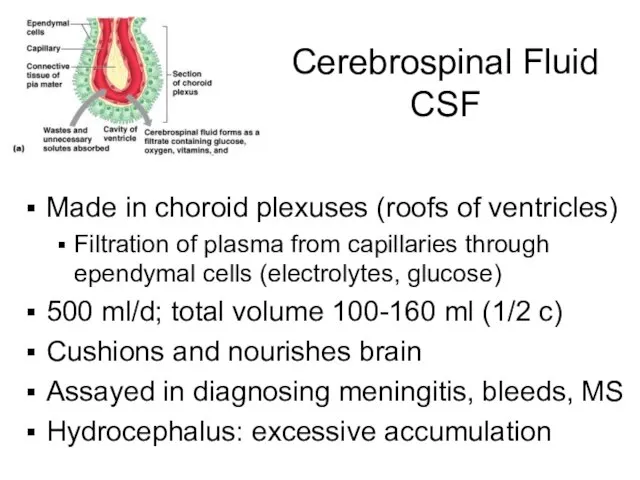
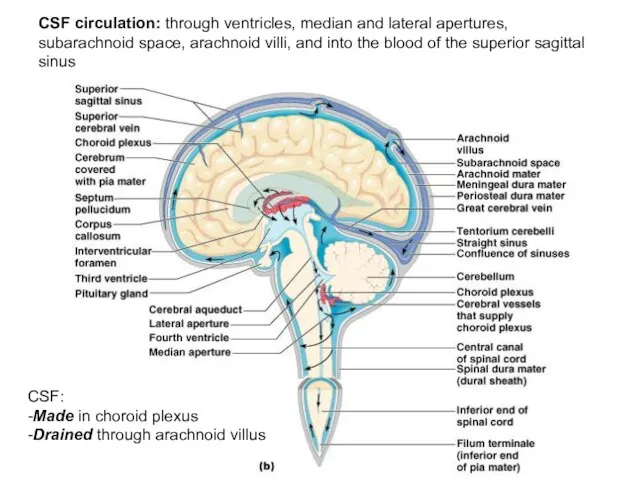
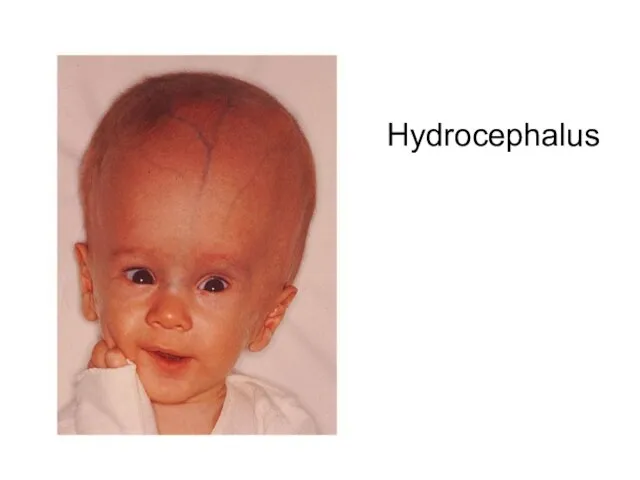


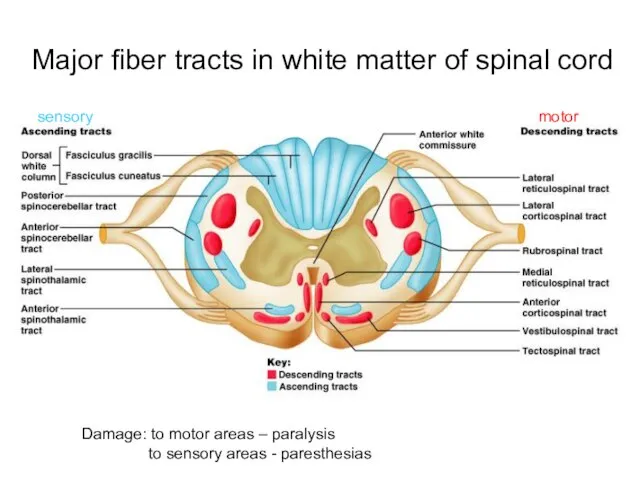

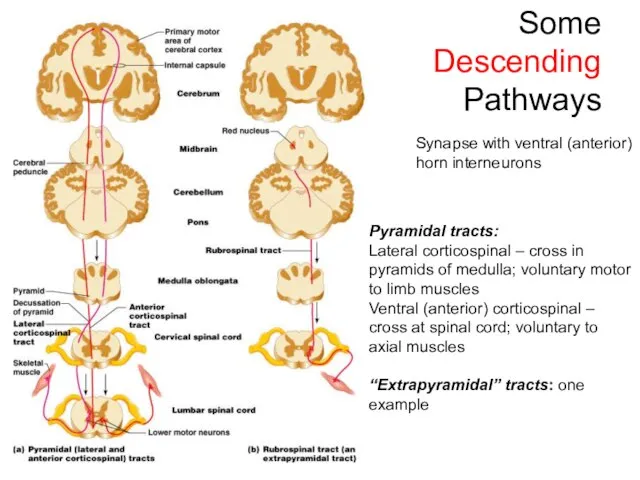
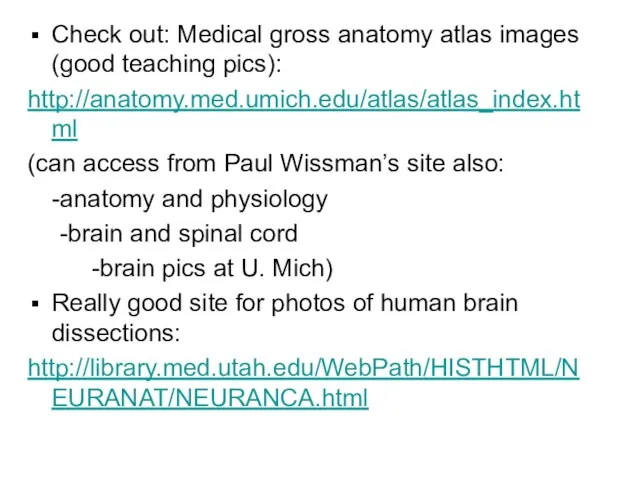
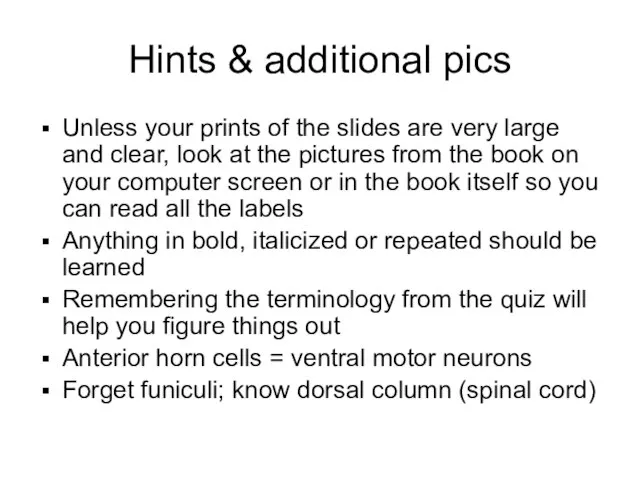
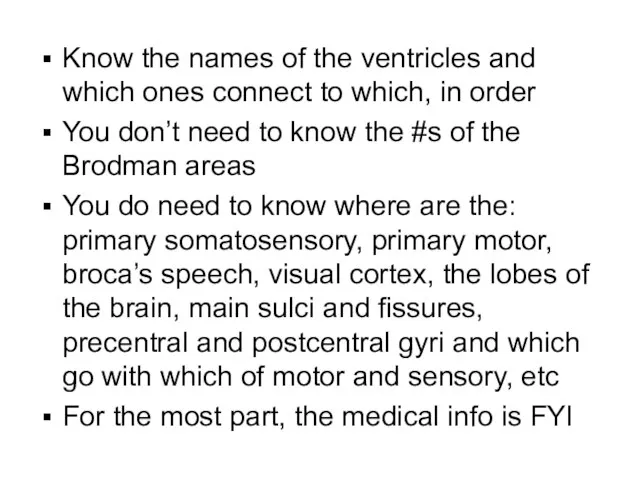
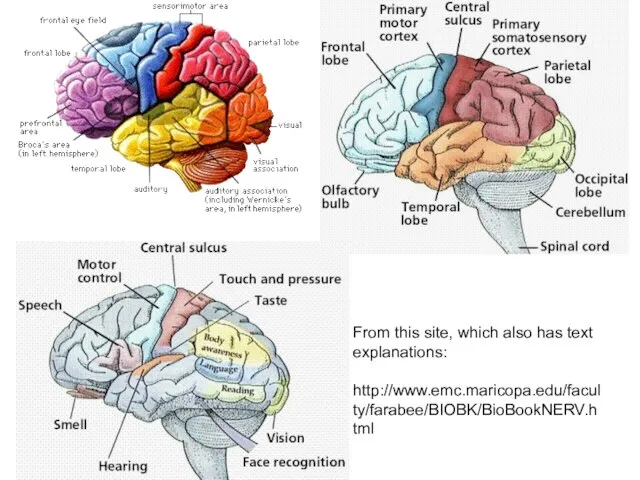

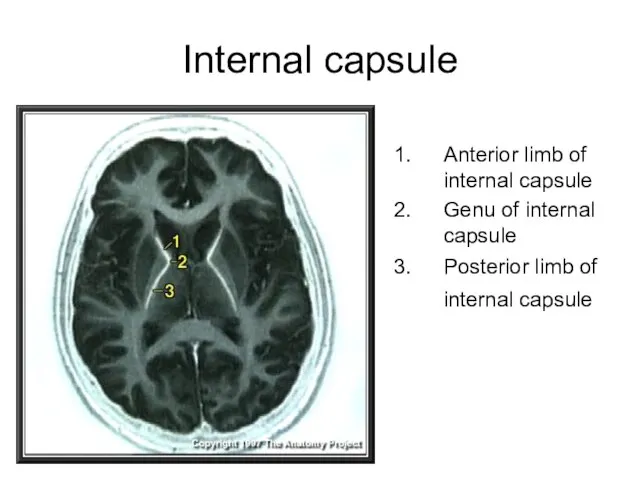
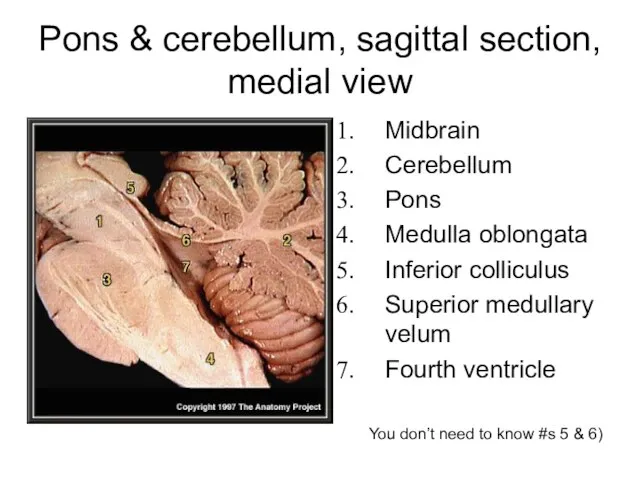
 Пошаговое руководство по заработку с AirDrop-компаниями
Пошаговое руководство по заработку с AirDrop-компаниями Конкурс детского творчества Пасхальная радость
Конкурс детского творчества Пасхальная радость Население трудовые ресурсы миграция населения трудовая миграция
Население трудовые ресурсы миграция населения трудовая миграция Средства массовой информации и их виды
Средства массовой информации и их виды Символика Российской Федерации
Символика Российской Федерации Линии
Линии Реализация наследственной информации в клетке
Реализация наследственной информации в клетке Конституция РК 1995 года, как основной закон государства
Конституция РК 1995 года, как основной закон государства Отношение государства к народу
Отношение государства к народу Итоги года и перспектива развития
Итоги года и перспектива развития Башкиры
Башкиры Баллистическое движение
Баллистическое движение Классный часКонвенция о правах ребенка
Классный часКонвенция о правах ребенка Формирование учебной самостоятельности обучающихся в начальной школе по системе развивающего обучения Д.Б. Эльконина – В.В. Давы
Формирование учебной самостоятельности обучающихся в начальной школе по системе развивающего обучения Д.Б. Эльконина – В.В. Давы Учет учебной работы в школе. Виды учета. Критерии оценки учета. Документы учета
Учет учебной работы в школе. Виды учета. Критерии оценки учета. Документы учета Условности и упрощения ГОСТ 2.305-2008. Нанесение размеров на чертежах
Условности и упрощения ГОСТ 2.305-2008. Нанесение размеров на чертежах Психология девиантного поведения
Психология девиантного поведения Развитие рынка страхования жизни в России в 2004 и 2005 годах
Развитие рынка страхования жизни в России в 2004 и 2005 годах Дворец творчества детей и молодёжи. Открытая детская конференция Музыка и Я Пьесса Мотылёк
Дворец творчества детей и молодёжи. Открытая детская конференция Музыка и Я Пьесса Мотылёк Иван Грозный и Избранная Рада. Путь реформ
Иван Грозный и Избранная Рада. Путь реформ Презентация на тему Среды жизни и места обитания животных
Презентация на тему Среды жизни и места обитания животных Презентация на тему Швейные товары
Презентация на тему Швейные товары  ЭТО
ЭТО Amy Winehouse
Amy Winehouse Происхождение ГАЛАКТИК
Происхождение ГАЛАКТИК Устройство православного храма. Символика (архитектурное строение, его вид)
Устройство православного храма. Символика (архитектурное строение, его вид) Презентация на тему "Волшебница Зима" 4 класс
Презентация на тему "Волшебница Зима" 4 класс Физическая реабилитация больных с заболеваниями сердечно-сосудистых систем
Физическая реабилитация больных с заболеваниями сердечно-сосудистых систем